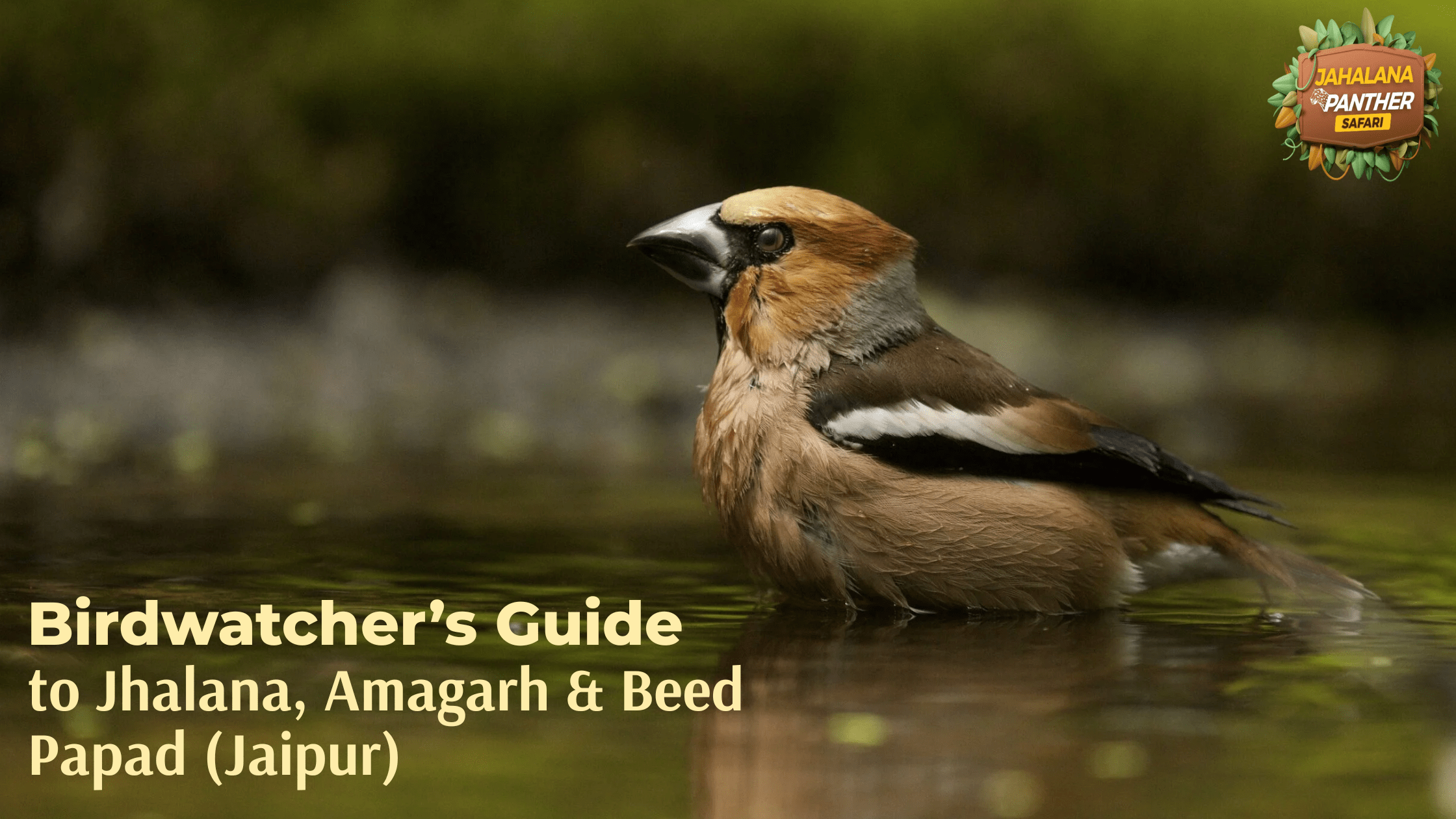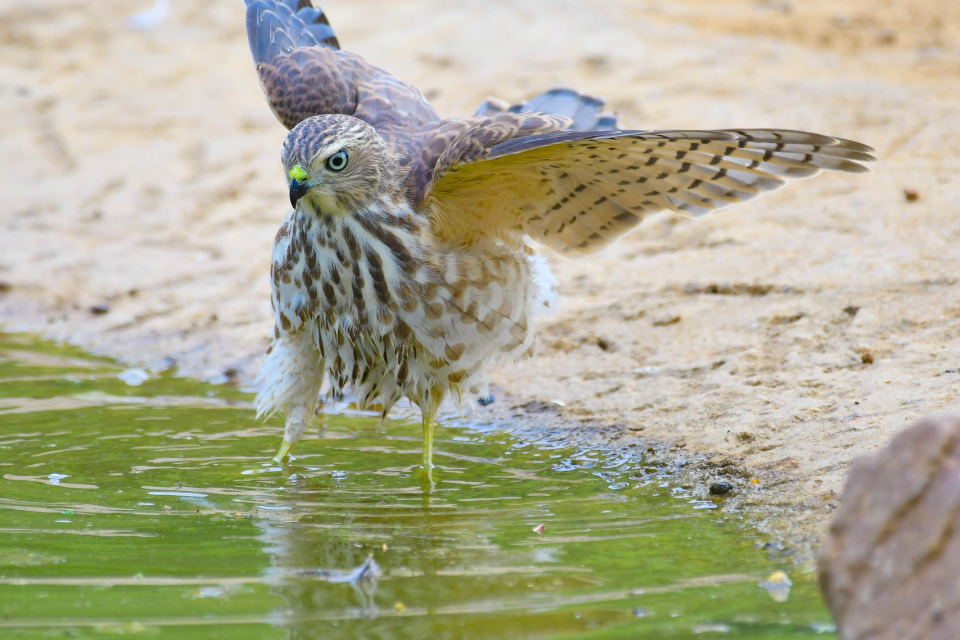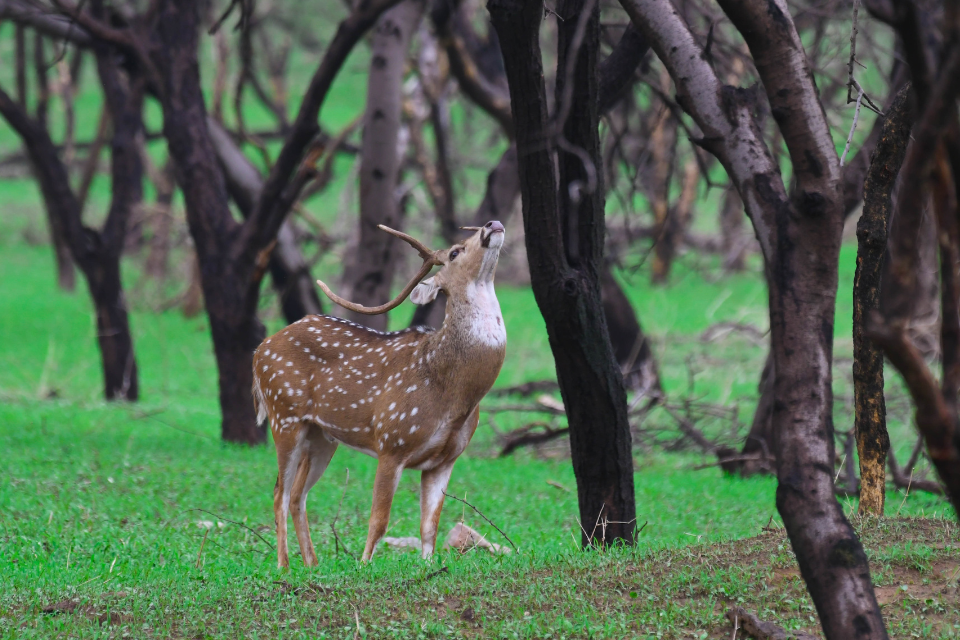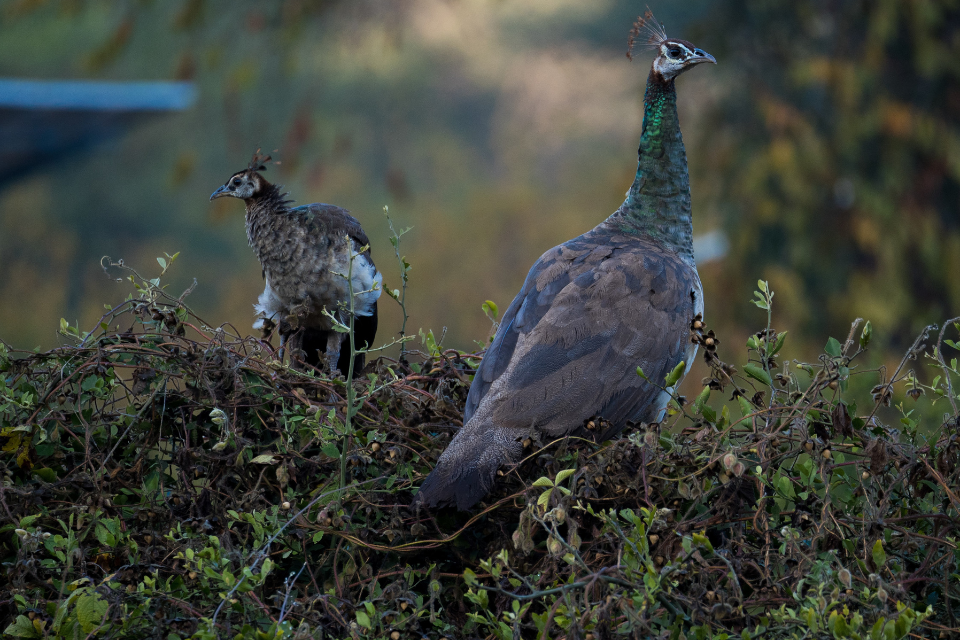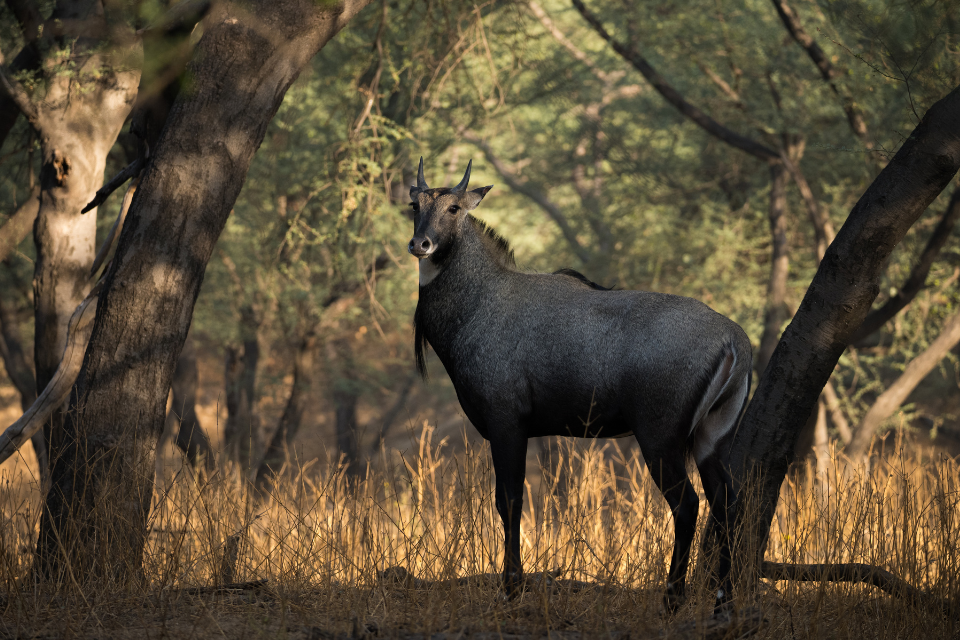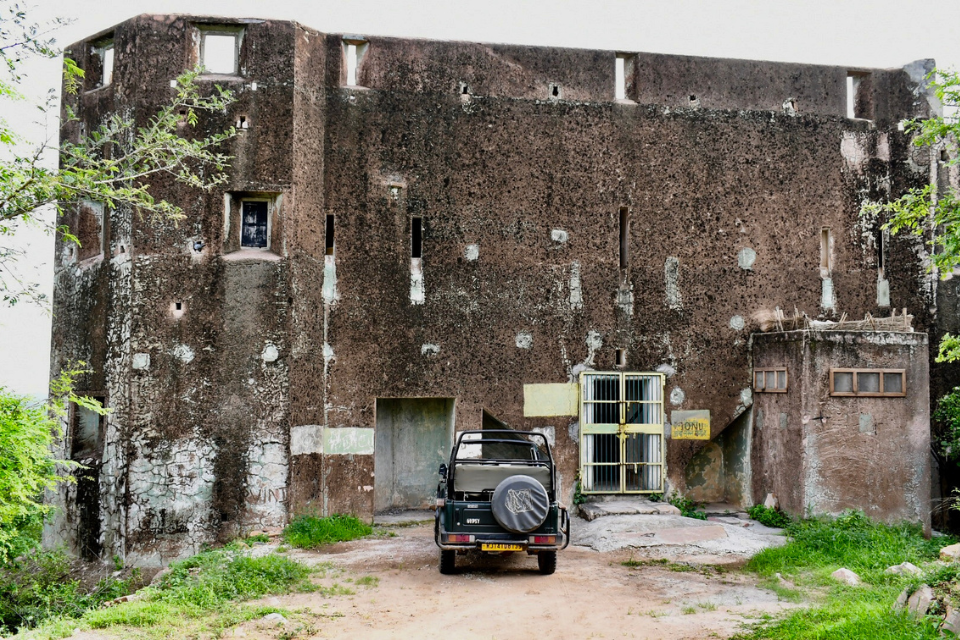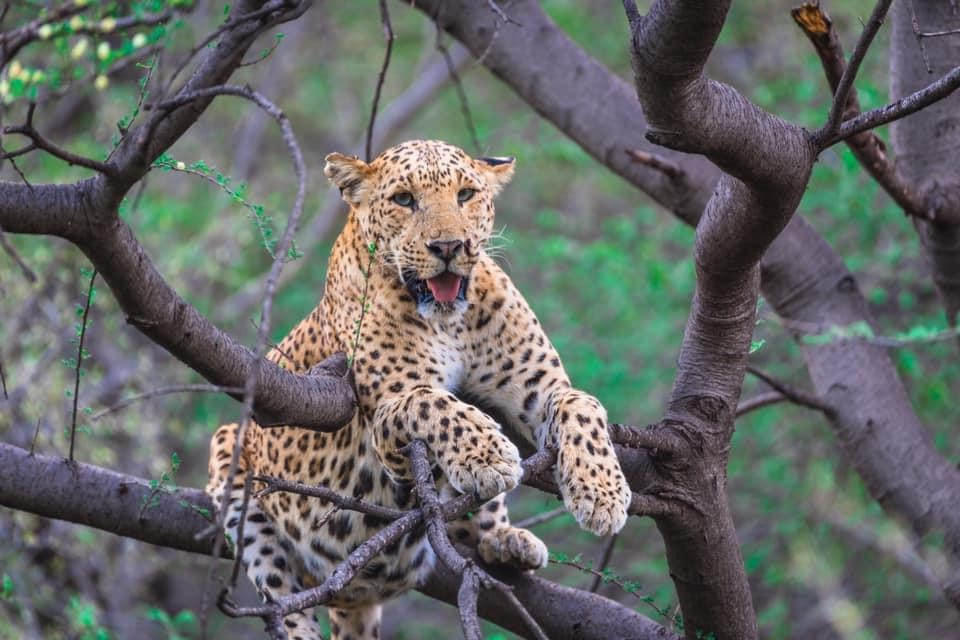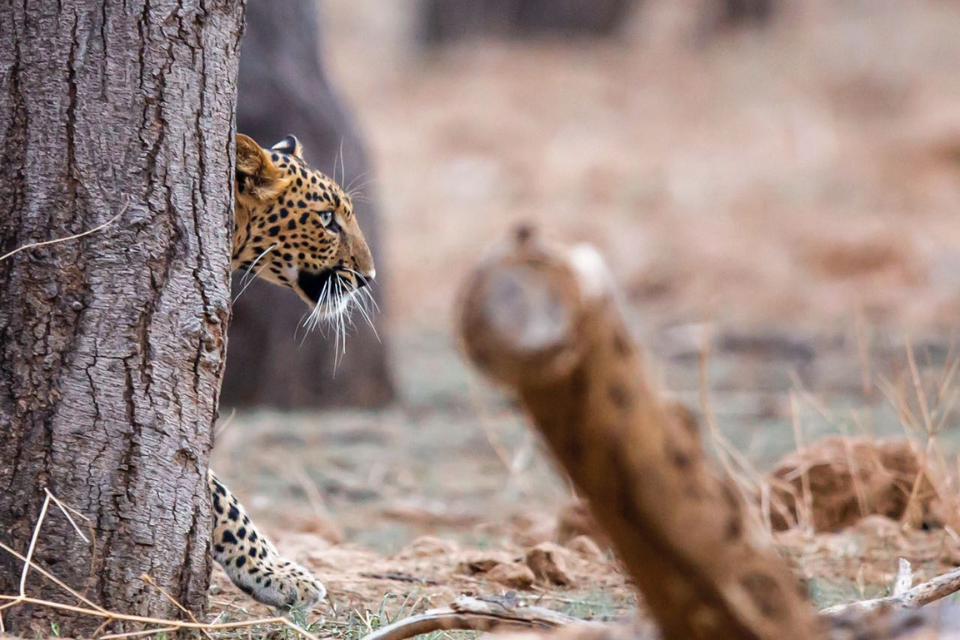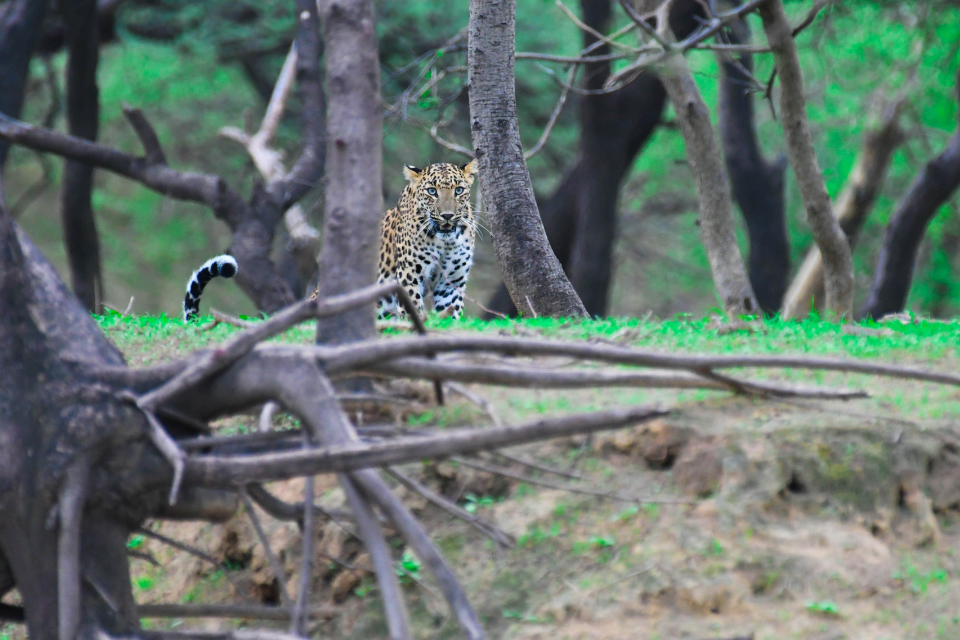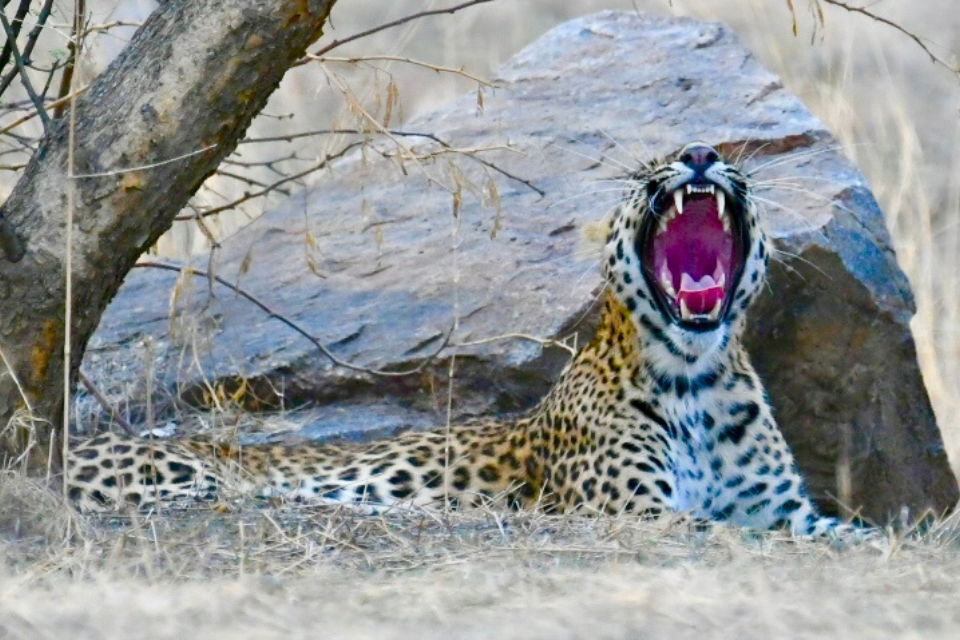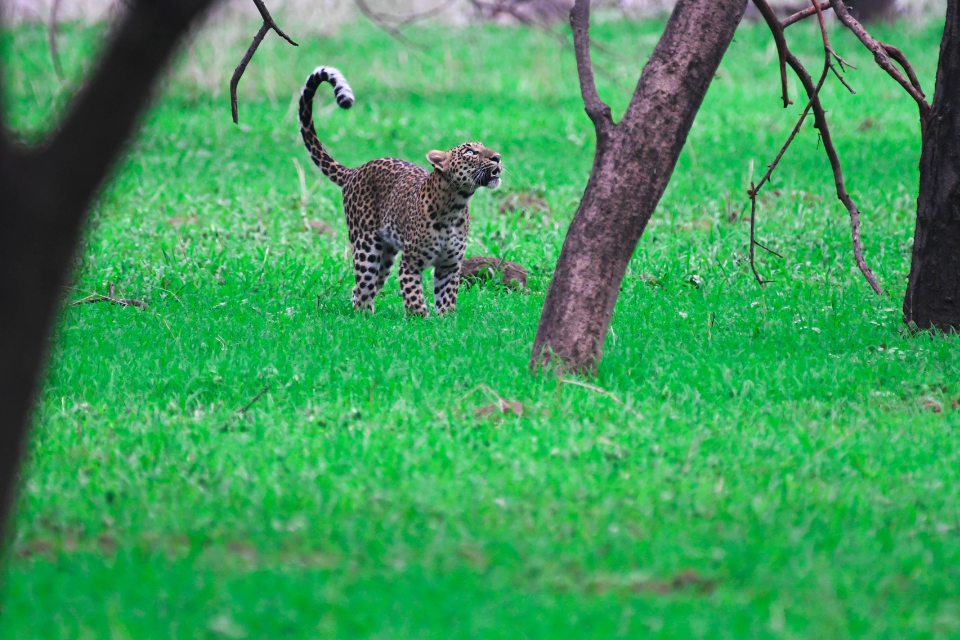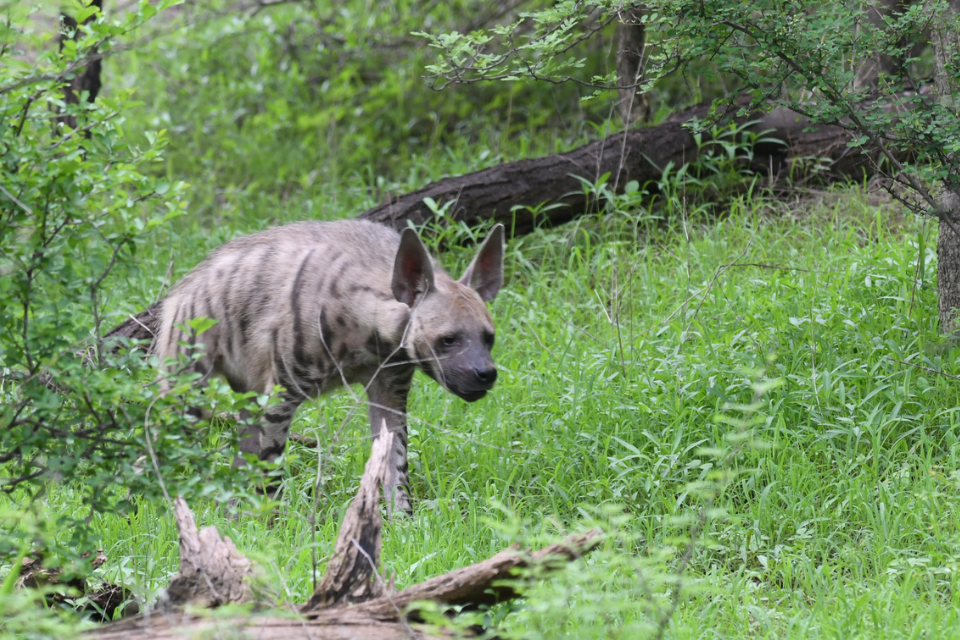- September 13, 2025
Birdwatcher’s Guide: Top Species to Spot in Jhalana, Amagarh & Beed Papad
Introduction
Jaipur isn’t just forts and palaces—it’s also one of North India’s easiest gateways to Aravalli scrub, rocky ravines, and monsoon woodlands that teem with birds. Within an hour of the Pink City center, three compact patches—Jhalana, Amagarh, and Beed Papad—offer year-round birding with a surprise at every bend: monsoon-fresh Indian pittas, winter raptors scanning from ridgelines, owls blinking from acacia shade, and sandgrouse rippling across gravel flats.
These sites sit within or alongside the Jhalana–Amagarh Leopard Conservation Reserve and the Nahargarh landscape, protected by the Rajasthan Forest Department. That protection, plus active safari management, keeps habitats accessible yet safeguarded.
Quick take:
• Best overall months: Oct–Mar (cool weather, winter migrants)
• Monsoon specials: Jul–Sep (Indian pitta, cuckoos, rain quail)
• Access: Safaris/permits are managed by the forest department; online booking via the OBMS portal is standard for Jhalana/associated safaris. Always check live timings/availability.
How to use this guide
Below, you’ll find site-by-site species picks, where to look, best time windows, and field tips tailored to each habitat. The species lists balance crowd-pleasers (easy, photogenic) with specialties (worth the effort). Sightings vary by season and luck—use these as targets, not guarantees.
1) Jhalana: Jaipur’s urban-wild bird classroom
Why go: Jhalana is famed for leopards, but the same mosaic of dhok (Anogeissus pendula) scrub, acacia edges, seasonal waterholes and rocky knobs makes it a compact birding lab. Surveys and field guides commonly place 150+ bird species here—plenty for a short morning.
When to visit:
- Oct–Mar: Winter raptors, bush birds at eye level in cool light.
- Monsoon (Jul–Sep): Vocal breeders; Indian pitta often turns the leaf litter. (Multiple tour notes and local guides highlight pitta as a marquee Jhalana bird.)
Where to look:
- Edges of dhok stands for prinias, babblers, drongos.
- Rocky outcrops for larks, wheatears (winter), shrikes.
- Quiet waterholes for lapwings, thick-knees, kingfishers.
2) Amagarh: Monsoon gullies, fort views & kingfisher-blue flashes
Why go: A newer safari zone near Galta Ji with steep ravines, thorn forest and seasonal streams, Amagarh is emerging as a quieter alternative with biodiversity and bird variety—local sources cite ~250 bird species across seasons.
When to visit:
- Monsoon & post-monsoon: Lush cover brings out paradise flycatchers, cuckoos, rain quail.
- Winter: Ridge thermals draw raptors; scrub hosts babblers and shrikes.
Where to look:
- Gullies with moisture for kingfishers, prinias, wagtails.
- Fort-side ridges for eagles and honey-buzzards on the wing.
- Open scrub benches for sandgrouse at first light.
Top species to target in Amagarh
- Indian Paradise Flycatcher (Terpsiphone paradisi) – monsoon stunners trail long streamers.
- White-throated Kingfisher (Halcyon smyrnensis) – common, photogenic near water.
- Painted Sandgrouse (Pterocles indicus) – dawn fly-ins over stony ridges.
- Crested Serpent-Eagle (Spilornis cheela) – patrols ravines.
- Shikra (Accipiter badius) – resident hunter around edges.
- Sirkeer Malkoha (Taccocua leschenaultii) – watch thorny scrub for a running tail.
- Plum-headed Parakeet (Psittacula cyanocephala) – small flocks at daybreak.
- Yellow-eyed Babbler (Chrysomma sinense) – buzzy calls from seeding grass.
- Ashy-crowned Sparrow-Lark (Eremopterix griseus) – open flats.
- Bay-backed Shrike (Lanius vittatus) – bright mask, classic perch hunter.
- Indian Robin (Copsychus fulicatus) – ubiquitous on rocks and walls.
- Barn Owl (Tyto alba) – crepuscular passes near old structures.
Pro tips:
- Footwork matters: A slow loop around water bodies after the monsoon can be incredibly productive.
Expect mixed flocks: Drongos, bulbuls, prinias and tailorbirds often move together—stay with the flock.
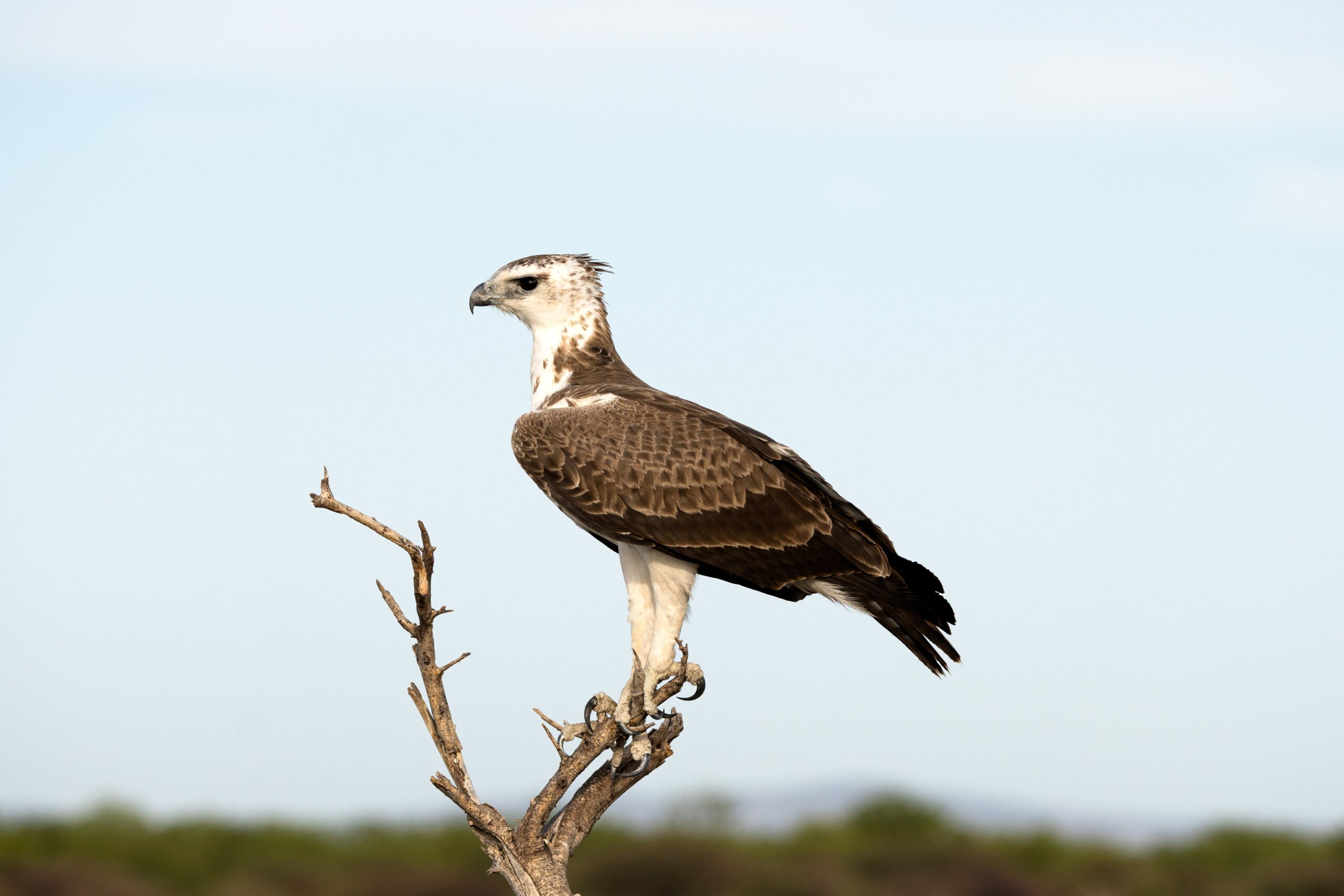
3) Beed Papad: Open-scrub specialists & Jaipur’s newest safari link
Why go: Beed Papad (also spelled Bheed/Bid Papad) forms part of the newer leopard-safari landscape around Maila Bagh–Nahargarh. The site is known for open scrub, rocky knolls and desert flora, with freshly developed waterholes and tracks improving viewing for mammals and birds. Jaipur’s third leopard safari at Maila Bagh—which incorporates parts of Beed Papad—opened to the public in 2025, adding structured access into this block.
When to visit:
- Oct–Mar: Crisp mornings for larks, wheatears, shrikes, and wintering raptors.
- Mar–May: Dry-heat movement around waterholes—good for sandgrouse.
- Monsoon: Rain quail/cuckoos; shrubbery bursts with prinias and babblers.
Where to look:
- Gravel flats: Watch for sandgrouse, thick-knees, lapwings.
- Rock crests: Scan for raptors and wheatears (winter).
- Waterholes: Early arrivals can be electric on hot days.
Top species to target in Beed Papad
- Painted Sandgrouse (Pterocles indicus) – signature of stony semi-desert.
- Chestnut-bellied Sandgrouse (Pterocles exustus) – possible over open gravel.
- Indian Thick-knee (Burhinus indicus) – statuesque in short scrub.
- Ashy-crowned Sparrow-Lark (Eremopterix griseus) – common, photogenic.
- Crested Lark (Galerida cristata) – songs from stones.
- Isabelline & Long-tailed Shrikes (Lanius isabellinus / L. schach) – winter & resident mix.
- Desert/Variable Wheatear (Oenanthe deserti / O. picata) – winter visitors on boulders.
- Short-toed Snake-Eagle (Circaetus gallicus) – scans stony slopes.
- Booted Eagle (Hieraaetus pennatus) – winter glide above ridgelines.
- Grey-necked Bunting (Emberiza buchanani) – passage/winter in rocky scrub.
- Green Bee-eater (Merops orientalis) – classic open country aerialist.
- Laughing Dove (Spilopelia senegalensis) – abundant, good for beginners.
Pro tips:
- Heat strategy: In summer, arrive before sunrise—sandgrouse and larks are active early, then vanish into shade.
Wind watch: Breezy ridges can hold soaring raptors even at midday.
Seasonal cheat sheet (Jaipur region)
- Monsoon (Jul–Sep): Indian pitta, Jacobin cuckoo, rain quail, paradise flycatcher; breeding behaviors; fresh foliage backgrounds.
- Winter (Oct–Mar): Raptors (Booted, Short-toed Snake-Eagle), wheatears and buntings in open scrub; waterbirds surge at nearby lakes (e.g., Man Sagar) if you’re extending your day.
- Summer (Apr–Jun): Hard light but great around waterholes; thick-knees, sandgrouse, larks are reliable in early hours.
Logistics & on-ground essentials
Permits & booking: Jhalana and Amagarh run in time-bound safari slots with limited vehicles; check the Official OBMS portal for availability and current timings. Private operator pages often mirror the seasonal slot windows; do verify before your drive.
Safety note: These are active leopard landscapes. Stay on authorized tracks, keep a respectful distance from wildlife, and follow your guide’s instructions at all times.
Gear checklist:
- Binoculars: 8x or 10x; a 300–500mm lens if photographing.
- Audio awareness: Bird calls carry far in scrub; pause often and listen.
- Clothing: Neutral tones, hat, and a light scarf in summer.
- Apps & notes: Field checklist apps help you log seasonality and hotspots.
Ethics: No playback around nests or sensitive species; no drones; avoid trampling crusted soils; pack out all trash.
Suggested 1-day loop (compact)
- Dawn: Jhalana—owls at first light, then prinias, bulbuls and pitta (monsoon).
- Late morning: Amagarh—gully-loops for flycatchers and kingfishers; scan raptors from fort-side viewpoints.
- Late afternoon: Beed Papad—open scrub for sandgrouse, thick-knees, larks; end with a raptor watch over rocky ridges.
Frequently Asked Questions (FAQ)
Q1. Do I need a permit for birding in these areas?
Yes—Jhalana and Amagarh require booked safari slots/permits via official channels. Beed Papad is linked with the newer Maila Bagh leopard safari; access is via managed routes. Always check latest rules on the OBMS portal or with the forest department before visiting.
Q2. What’s the single best season for a first-timer?
Oct–Feb offers comfortable weather and the biggest diversity thanks to winter migrants. Monsoon is magical for calls and breeding behavior, especially if you want to see Indian pitta.
Q3. Can beginners get good photos?
Absolutely. These sites are compact and vehicle-accessible; owls, shrikes, bee-eaters and peafowl are cooperative. Keep ISO flexible, shoot early or late, and watch for birds returning to perch cycles.
Q4. Are guides necessary?
Highly recommended. Local drivers and naturalists know quiet waterholes, roost trees and recent movement, which can multiply your sightings in a short window.
Q5. Any add-on birding nearby?
Yes—Man Sagar (Jal Mahal) hosts waterfowl and waders in season; it’s a classic extension for a city-day.
Q6. What about checklists?
Local tour pages and blogs frequently summarize Jhalana’s 150+ species and Amagarh’s ~250 species; use them as reference and keep notes of your own sightings to share with the community.
Shortlist: “Top-5 per site” (easy wins)
- Jhalana: Indian Pitta, Indian Eagle-Owl, Spotted Owlet, Indian Thick-knee, Bay-backed Shrike.
- Amagarh: Indian Paradise Flycatcher, White-throated Kingfisher, Painted Sandgrouse, Yellow-eyed Babbler, Shikra.
- Beed Papad: Painted/Chestnut-bellied Sandgrouse, Ashy-crowned Sparrow-Lark, Indian Thick-knee, Short-toed Snake-Eagle, Long-tailed Shrike.
Final word
Birding in Jhalana, Amagarh and Beed Papad is the perfect Jaipur detour: easy logistics, compact habitats, real specialties. Go with a plan, keep your ears open, and let the Aravalli light do the rest. Most of all, remember that these are shared wild spaces—respectful behavior today means better birding tomorrow.
Mini-disclaimer
Wildlife sightings vary with season, weather, access rules, and ongoing management. Timings, slot availability and routes can change; confirm on the official portal or with local authorities before you travel. Species lists herein reflect commonly reported birds for these habitats; actual presence depends on seasonality and luck.
Disclaimer All images used in this blog are either sourced from public domain or credited to their respective owners. If you are the copyright holder of any image and wish to request its removal or proper attribution, please contact us at [email protected]
